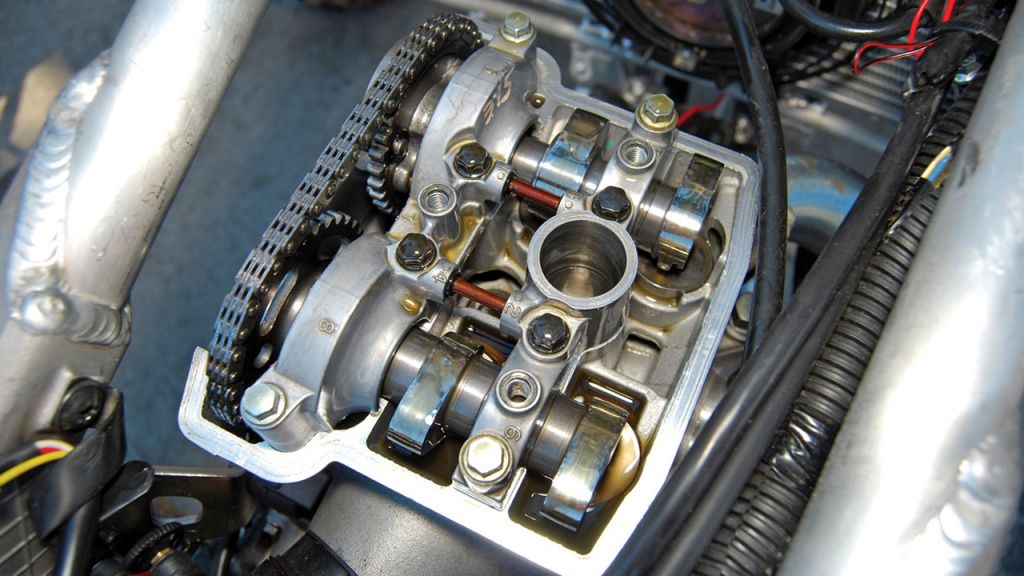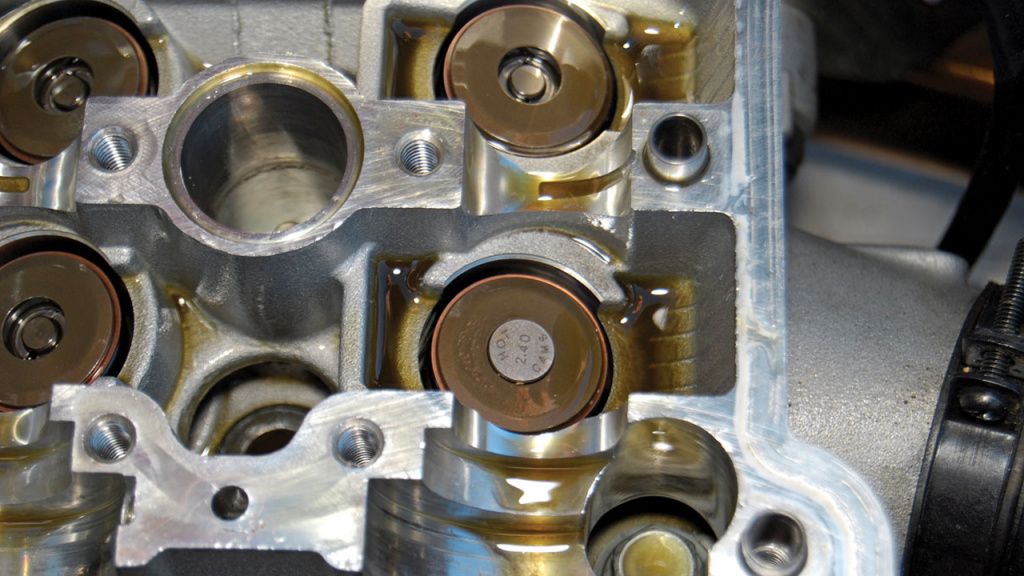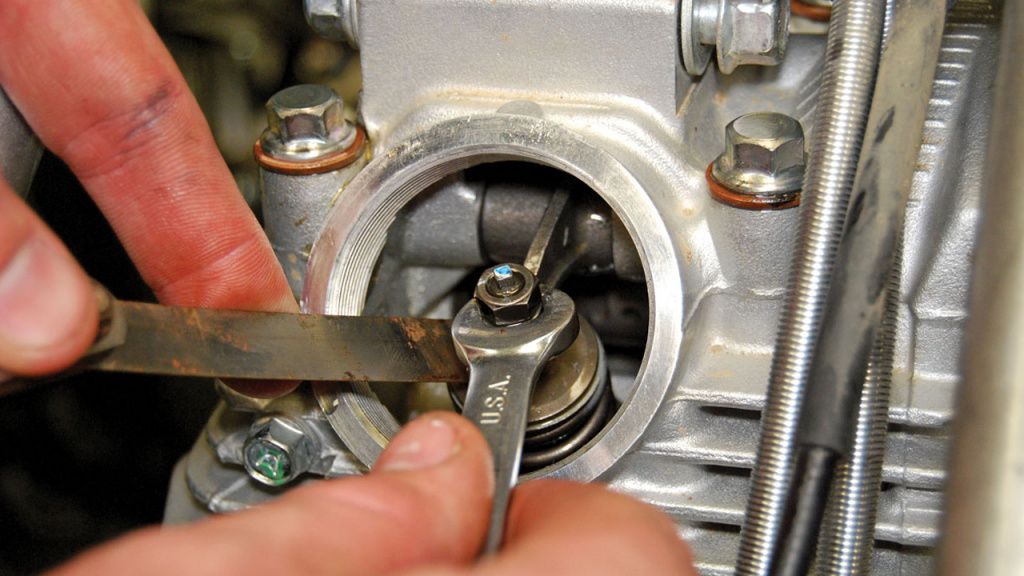How Often to Adjust your ATV Valves
The valves in the four-stroke engine of an ATV are relatively simple in concept and practice. They are the gatekeepers to the combustion chamber.
HOW THE FOUR-STROKE ENGINE WORKS

To understand this better, we need to first consider the four strokes the engine takes.
1. Intake stroke – The piston moves down the cylinder
2. Compression stroke – The air/fuel mix is compressed in the chamber
3. Power stroke – The compressed mix is ignited by the spark plug firing, moving the piston down the cylinder
4. Exhaust stroke – The spent gases are pushed out so the cycle can repeat.
During the intake stroke, the valves open to allow the fresh mix to flow in. Then the valves seal during the compression and power strokes and offer an exit for the used gas during the exhaust stroke. The exhaust valve is closed again, allowing the cycle to start over.
ATV VALVE LASH
For ATV valves to work correctly, there needs to be a slight amount of clearance (often known as “lash”) between the rocker arm or cam and the valve stem. If there’s too much or too little lash, the engine will not run at peak performance and will be less fuel-efficient. Particularly tight lashes can cause wear and tear.
The exact valve clearance for each vehicle is different and specified in the service manual. Because the metals in the engine expand when they get hotter, the lash is reduced. So, valve clearance is less about finding the perfect clearance for your valves but instead ensuring they fall within a specific range outlined in the service manual.
ADJUSTMENT INTERVAL

ATV valves don’t usually need to be changed often. Again, recommendations will be outlined in your service manual. It may be that your ATV’s service manual specifies checking the valve adjustment every 15,000kms. For high-performance ATVs, you may want to check your valve spacing every two oil changes.
ATV valves can loosen or tighten over time regardless of how you ride your ATV.
SYMPTOMS OF VALVE LASH ADJUSTMENT PROBLEMS
Poor valve clearance isn’t always recognizable through apparent symptoms from your ATV. It may only be apparent when you check the valve clearance yourself, but this is a semi-involved job that many ATV owners prefer to leave to their dealership to tackle. But, sometimes, valve clearance can become so out of step from the suggested guidelines that symptoms rear their head. You’ll know to at least check the clearance of your valves if any of these issues arise.
A shallow clearance can present itself as issues with performance. The valves can no longer give up so much of the heat, leading to pre-ignition and engine overheating. If the valve clearance isn’t considered for a long time, then the engine won’t start. If the engine does start with a wholly removed clearance, the exhaust valve will become overheated and then torched.
What about the other end of the scale—valves that are too loose? Generally, you’ll hear a clatter from the valve area when they’re loose. Slightly loose valves aren’t much of an issue besides this, and this is why many riders prefer to set their lash adjustment to the looser end of the manufacturer's specifications. But very loose valves can cause mechanical damage and certainly increase wear and tear on the other valve train components.
CHECKING AND ADJUSTING VALVE CLEARANCE

As discussed, adjusting the valve clearance of an ATV can be an involved process that takes several hours. This depends a lot on the model of ATV. Some manufacturers have been careful to make the adjustment of valve clearances as simple as possible. Others are notoriously difficult.
There are three main ways to adjust your ATV’s valve clearance. The most common and easiest method is using a screw adjuster. Another option is a hydraulic lifter. Finally, some valves use shims, thin coin-shaped metal pieces of different lengths used to adjust how high the valves sit.
In summary, you’ll need to check your manufacturer’s manual for an idea of how often to check valve adjustment, but on average, you should expect it to be every 15,000kms or so. If any of the above symptoms present themselves, though, you should check your valve lashes to avoid prolonged wear and tear.








































